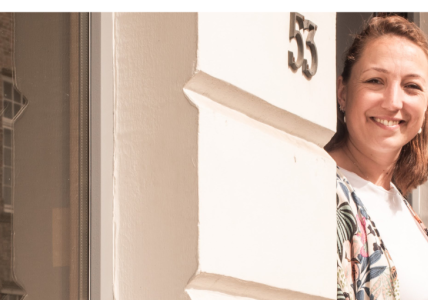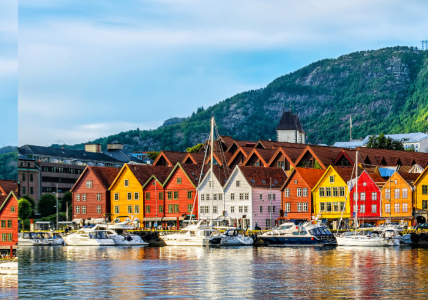A Norwegian pilot has developed a sustainable greenhouse using 50% less energy for heating.
The rising cost of energy spells trouble for greenhouse production, which is energy-intensive and hence a vulnerable trade in the current situation. Growers across Europe are hard hit by the energy crisis.
But a new solution developed in Norway could turn the situation around. A pilot within the North Sea project SMARTGREEN has turned out to be a serious bid for commercially viable, CO2-neutral greenhouse that also saves massive amounts of energy.
“This is one of the highlights of my career,” says Michel Verheul. He is a researcher at the Norwegian Institute of Bioeconomy Research (NIBIO) in Særheim and the pilot’s leading scientist.
Verheul hails from the Netherlands but has spent the past 26 years in Norway researching greenhouse production.
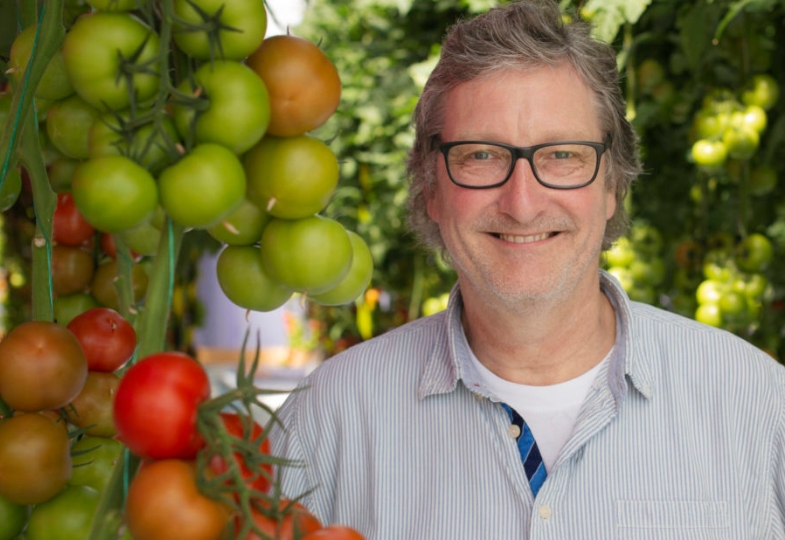
Michel Verheul at work in one of NIBIO's experimental greenhouses. Photo courtesy of NIBIO.
Closing the greenhouse to trap CO2
“Plants need heat, light, CO2, water, and nutrients,” explains Michel Verheul. “In Norway, there is a general problem of too little light, so we have long-term experience with artificial lighting. Traditionally, Norwegian growers have been using sodium lamps. We found that switching to LED lighting could cut energy use for lighting by 40%. However, at some point the extra light didn’t improve yields.”
The scientists found that the limiting factor was CO2. The plants need CO2, but in a traditional greenhouse this greenhouse gas is – almost ironically - lost to the outside air. This does no good to the atmosphere while the greenhouse plants are deprived of this vital growth factor.
“Hence we came up with the idea to close the greenhouse. We got in touch with the company GreenCap Solutions which has invented a very interesting system of CO2 capture.”
While most other direct carbon capture systems use hazardous chemicals to extract CO2 from the air, this system does not. Instead, it employs a natural zeolite mineral with no chemical footprint, explains Verheul. Due to its unique properties, zeolite allows dynamic short-term capture and release of CO2 to a closed greenhouse. This enables micro-management of CO2 levels in the greenhouse.
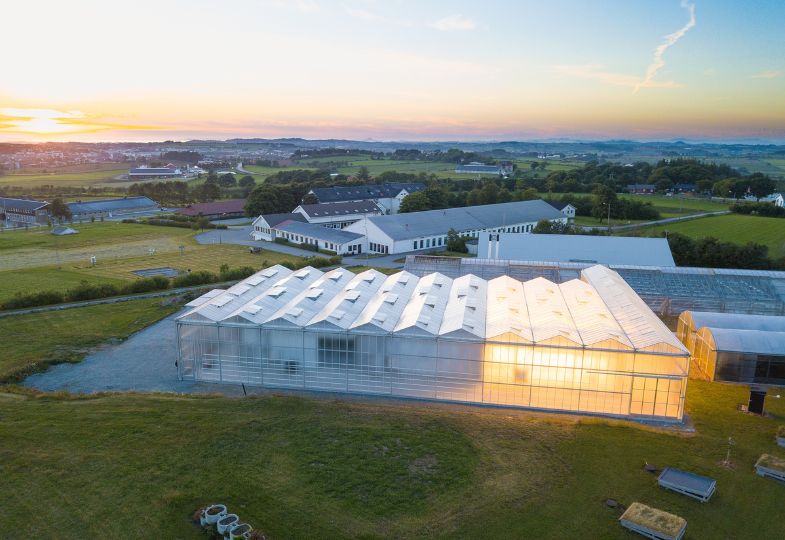
The Særheim experimental greenhouse. Lighting regimes are important in greenhouse production. In Norway, light is a limiting factor in plant growth. Photo: Erling Fløistad / NIBIO.
A market-ready, sustainable greenhouse
The experimental greenhouse in Særheim uses solar power, a forced ventilation system, and buffer tanks to regulate temperature. This makes the production near CO2 neutral.
When it comes to water use, greenhouse production is already best in class, with a water consumption of only 10% that used by outdoors plant growers. But even this gets better with the Norwegian system.
“Due to the closed system, we can prevent nearly all loss of water to the atmosphere,” says Verheul. “Basically, the only input we need is the water that ends up in the fruits.”
On top of the energy and water savings, the researchers found the yields to be higher within the closed greenhouse system. Innovative lighting and CO2 management have increased crop yields by 40%.
This makes the new concept commercially viable. “According to GreenCap Solutions, the system is likely to pay for itself within 3-4 years, after which it becomes a net profitable business,” says Verheul.
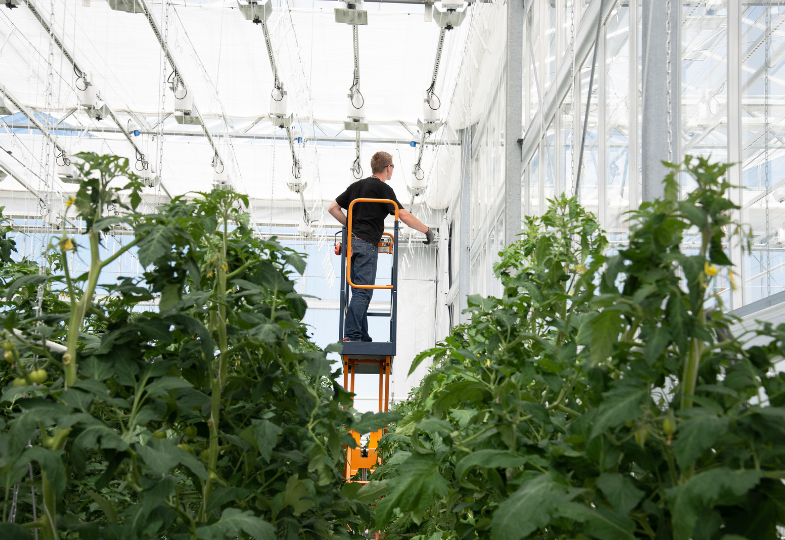
The scientists have documented a 40% increase in yield with the innovative, closed greenhouse concept. Photo: Erling Fløistad / NIBIO.
Strong international interest
It may only be a matter of time before the concept is rolled out on a wider scale.
“We have received a lot of interest from across the world,” says Verheul. Even before the team has presented their results in a scientific paper, they have received widespread media attention. Beyond a strong interest from Norwegian growers, the scientists have received inquiries from professionals in the US, Japan, Denmark, the Netherlands, Finland, and the Arabic countries.
Although the Norwegian trials used tomatoes only, Michel Verheul expects the system will work for a wide range of plants. “Tomato is the typical experimental crop because it is relatively challenging. If a new method works with tomatoes, it will work across many other crops.”
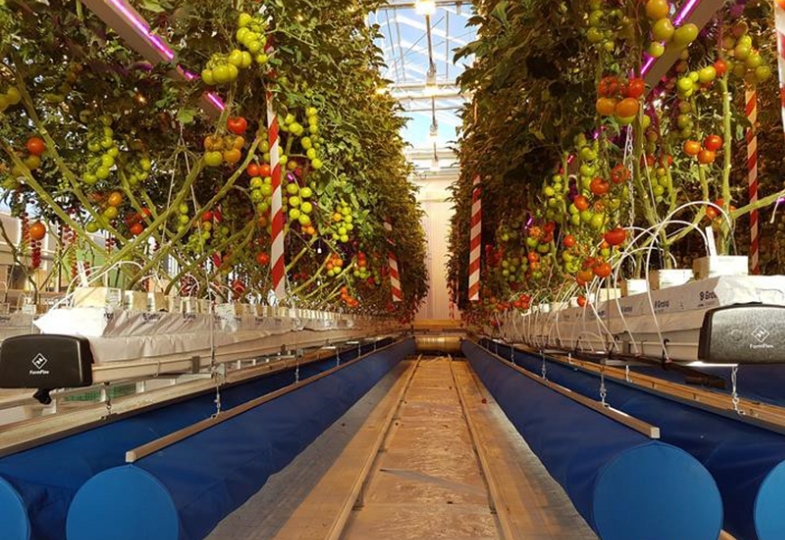
The greenhouse at Særheim uses innovative methods to capture carbon from the air. Photo: Michel Verheul / NIBIO.
First large-scale production under way
Despite the promising results, Verheul says it can still be hard to motivate growers to invest in the new concept. “Growers are often stuck in their way of production. Investment costs are considerable and growers in Norway can have a sales agreement for only one year at the time. New systems need promotion for growers to adopt them.”
Two recent developments are however set to kick-start the new concept in Norway.
First, the Norwegian grower Lauvsnes Gartneri has decided to invest in the first commercial greenhouse based on the concept. The projected 20,000 m2 production facility, expected to start operating within 2022, represents a 100-times scale-up from the trials. If this turns out a commercial success, it may inspire other growers to make the switch. The family-owned company has worked to reduce its energy demand since 2009.
We need to produce more food with less energy and move towards becoming truly green. It is fantastic that we can even capture CO2 from the air without chemicals. I believe this is the future that we all need to consider, and someone needs to go first.
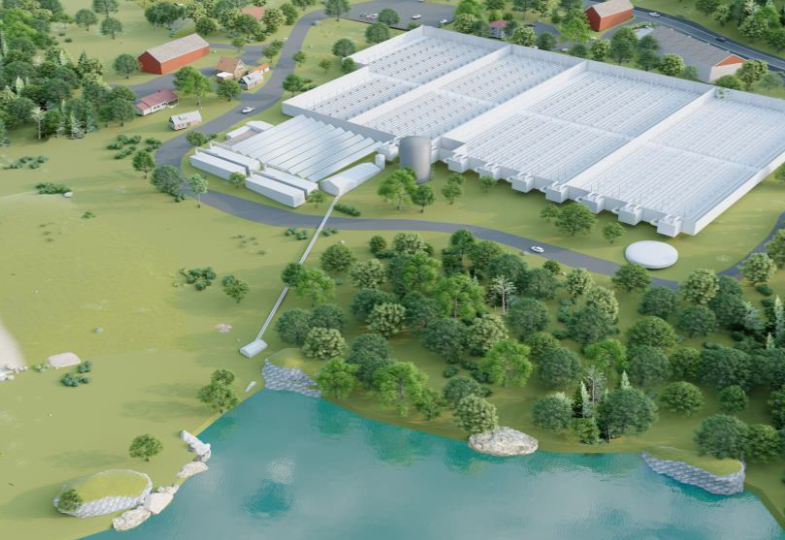
A visualisation of the Lavsnes grower's climate-neutral greenhouse. The commercial production will be scaled up 100 times compared to the research pilot. Illustration: Lavsnes Gartneri.
Second, the county of Rogaland, home of the Særheim research institute, has indicated a wish to implement the new production method in their plans.
“Around 95% of Norway’s tomatoes and 45% of our cucumbers are produced in Rogaland alone,” explains Verheul. “The county has a policy to become CO2 neutral, so there is a strong interest from the regional authorities in reducing the carbon footprint of this industry.”
Will the energy crisis put Europe on a greener path?
Since 2017, the 12 partners in SMARTGREEN have worked together to reduce energy consumption in greenhouse production of fruit, vegetables, and ornamental plants. The challenge was to achieve this without compromising on yield or quality.
“It has been a very good cooperation,” notes Verheul. “The partners learned a lot from each other. In our case, we were inspired by sensors used in some of the other countries. Having the direct contact to those who developed these systems is really helpful.”
SMARTGREEN combines different partners' skills within light use, models, and sensors. It has allowed for testing across borders, joint experiments, and data analysis that we normally cannot do locally. And we believe we may have reached solutions that the greenhouse industry can implement right now.
As energy prices are at an all-time high and winter looms ahead, it is comforting to think that at some point in the future, we may look back at this critical time as a turning point.
Interreg projects across Europe are charging ahead with new energy-saving solutions. They produce concepts that work and are ready to adapt and adopt on a wider scale. In the North Sea Region alone, more than 30 projects focus on topics that reduce energy consumption, focusing on energy efficiency, greeen transport, or the circular economy.
